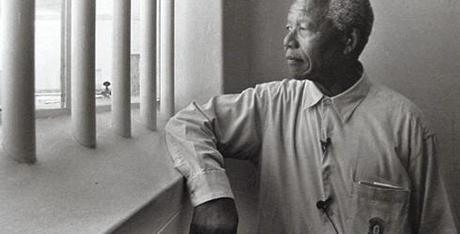
Today we hear and interesting perspective on Robben Island Museum in South Africa from Hermits Door. We awoke to dawn in Cape Town, watching the pink wisps of clouds signal the rising sun on the skyline of Table Mountain. After many nights of rain on the eastern side of the country, we were ready for a sunny day in Cape Town. We had reserved seats on the first ferry to Robbin Island, which was fortunate. With today’s weather, the ferries to the island would be full with those wanting to tour the former prison 12 km off shore from Cape Town.
We awoke to dawn in Cape Town, watching the pink wisps of clouds signal the rising sun on the skyline of Table Mountain. After many nights of rain on the eastern side of the country, we were ready for a sunny day in Cape Town. We had reserved seats on the first ferry to Robbin Island, which was fortunate. With today’s weather, the ferries to the island would be full with those wanting to tour the former prison 12 km off shore from Cape Town.
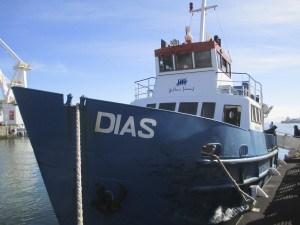

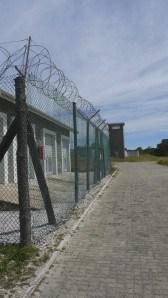
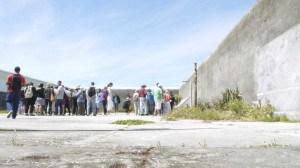

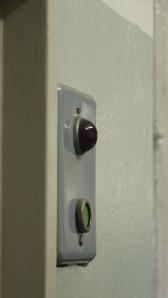
While the resistance against the apartheid legislation was non-violent in the 1960’s, the treatment of the inmates on Robbin Island was not. Various methods of torture and physical harm were used against the early generation of political prisoners.
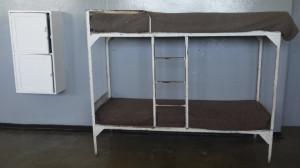
In the 1970’s and 1980’s, these methods were not employed, as they were not effective against those with strong beliefs, and international oversight agencies were visiting the island because of reports of abuses. But, more subtle means of harassment were use. For instance, inmates were issued two sets of clothes annually: summer and winter dress.
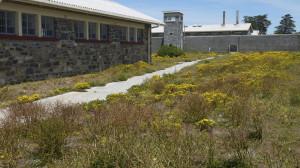
But, size was not considered. Thus an inmate could be issued clothes that were two large or small. The day before oversight and news agencies arrived, new clothes that fit the inmates were issued, used for photographs, and then take back the next day, with some bureaucratic justification that some procedure had not been followed.
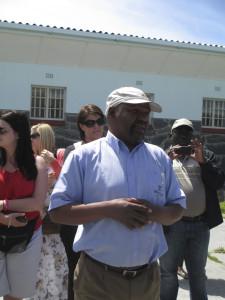
Most of the political prisoners completed their sentences by the early 1990’s, as the era of apartheid waned. The last inmates left and the prison was closed in 1996, two year after democratic elections were held. It is now a museum to the leaders of the struggle. The tour is set up in two parts. One included a bus drive around to various locations of the island, with a docent providing an overview of how the prison operated. The other part was a walk through the prison, lead by an former political prisoner. Our guide was 19 when he participated in a college campus walk. He was arrested with other non-violent protesters in 1976, convicted in 1977, and severed his 5 year term, in Group D. What stood out in his comments was that hedid not have a scripted tour.
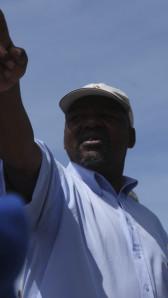
He began with, “Today is Saturday,” which it was. “This was a day we prisoners enjoyed because we had just worked at hard labor Monday through Friday. Saturday was our day off for sports…”. As his tour progressed he talk, told stories, and reminisced about that period of his life. Occasionally, he would interject, “I have spoken too long. We must move along.” We could have spent the day.
Apartheid, “separated development”, ended 18 years ago, but the change began years before that. We have had interesting conversations and observations of the social situation during our travels in South Africa. As I wrote earlier, about President Eisenhower’s Executive Order 10730, de facto segregation continues today.
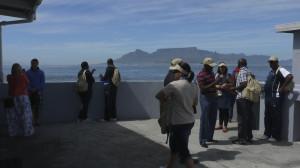
Our observation along our travels so far is that we are mostly in white communities of white tourists from Germany, Britain, and the USA. We are mostly served by black employees. Until arriving in Cape Town, we have seen only one group of black tourists in Skukuza Rest Camp. Our bus around Robbin Island was composed mostly of black tourists on a bus tour.
When we were with our guide for the earlier part of our safari tour, we had many conversations about her perspective on the social and political aspects of her country. She is of English and Afrikaner, descent. She summaries the changes that she saw growing up in the 1970’s, stating that the prior generation focused on their belief of how blacks could not reach greater potential, while her generation was already asking why blacks could not reach greater potential. The language was changing before the laws.
Nelson Mandela was elected president in 1994. He pursued the Truth and Reconciliation hearings, with the intent of uniting the country an social groups. The current president, Jacob Zuma, appears to be reversing apartheid, blaming this era for most of South Africa’s problems. Blaming Paul Kruger for economic problems (the belief is that when he escaped from British rule in the early 20th century, he stole most of the assets of the country and hid them in European bank accounts). Meanwhile, Zuma is writing laws that restrict and extract whites from society, and elevating his position. He claims that Mugabe’s administration is Zimbabwe should be the model for South Africa. He proposes a scheme by which white landowners would be bought out, involuntarily, for 50% of the land value for their farms which would be given to local black leaders for redistribution (He did suggest that local governments might consider contributing the other 50% of the value). Even his ANC (African National Party) is scratching their heads over his largess and proclamations that do not come from the party.
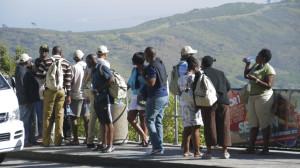
At the same time, I look to those apparently middle class black tourists. Until Cape Town, we saw only “haves and have nots”. We had a conversation with a black woman at a gas station. She was traveling for work and returning home. She drove a nice looking SUV. When she found out that we had three weeks for vacation, she mused that she would like to “rich” like American tourists, and be allowed to take vacation. In the evening after our tour of Robbin Island, we attended the Cape Town Ballet. The audience and dancers were integrated. The audience was obviously educated. If hope exists for South Africa, it will be in education. Education provides for economic prosperity. Education provides for a skeptical view of politicians who use their power for their benefit. On Robbin Island, many of the inmates arrived without education or literacy in English. The political prisoners took them on and taught them to read and write. For each of their five year sentences, they had five years to educate someone to think on his own.
Entry Fee: R230
Location: Across Table Bay, Robben Island Museum. Private Bag, Robben Island, Cape Town 7400
